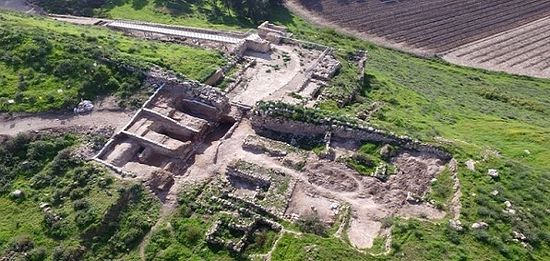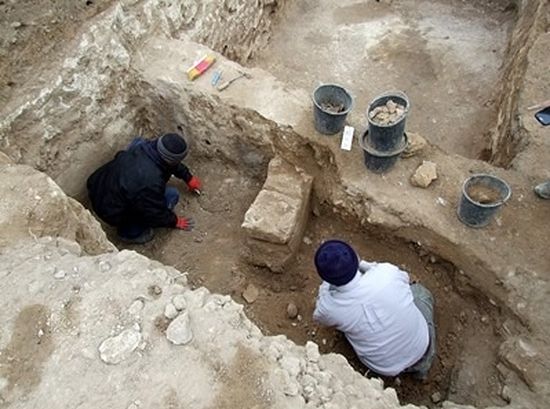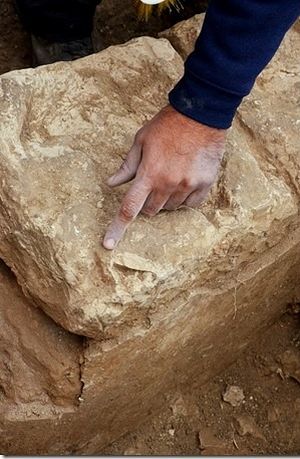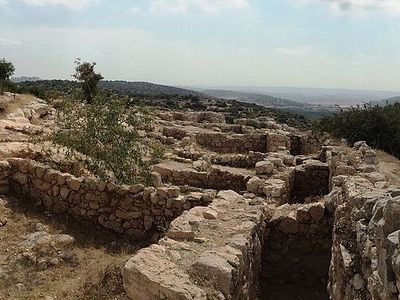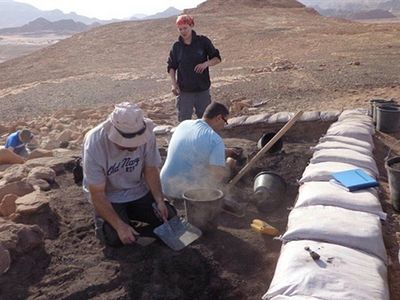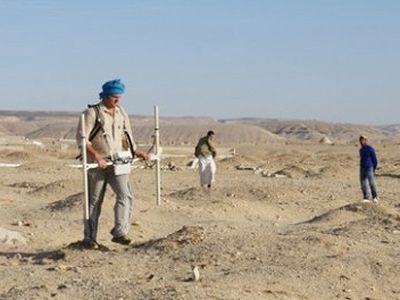Source: WND.com
September 29, 2016
The Apostle Paul wrote, “God has chosen the foolish things of the world to put to shame the wise.”
That being the case, what better evidence of the Bible’s historical dependability than a 2,700-year-old toilet?
Archaeologists in Israel have announced the discovery of an ancient commode unearthed during excavation of the First Temple-era gate complex of the city of Lachish in the Judean foothills that they say confirms the Bible.
The current excavation completes work begun decades ago by British archaeologists. The Lachish city gate – the largest known in ancient Israel (80 feet by 80 feet), which is now completely exposed and preserved to a height of 13 feet – consisted of six chambers, three on either side, and the city’s main street that passed between them.
According to Sa’ar Ganor, excavation director on behalf of the Israel Antiquities Authority, “The size of the gate is consistent with the historical and archaeological knowledge we possess, whereby Lachish was a major city and the most important one after Jerusalem. According to the biblical narrative, the cities’ gates were the place where ‘everything took place’: the city elders, judges, governors, kings and officials – everyone would sit on benches in the city gate. These benches were found in our excavation.”
In addition to artifacts found consistent with the conducting of those activities, a gate-shrine that had been sealed off – its walls coated with white plaster – was excavated.
“Steps to the gate-shrine in the form of a staircase ascended to a large room where there was a bench upon which offerings were placed,” said Ganor. “An opening was exposed in the corner of the room that led to the holy of holies; to our great excitement, we found two four-horned altars and scores of ceramic finds consisting of lamps, bowls and stands in this room. It is most interesting that the horns on the altar were intentionally truncated! That is probably evidence of the religious reform attributed to King Hezekiah, whereby religious worship was centralized in Jerusalem and the cultic high places that were built outside the capital were destroyed: ‘He removed the high places, smashed the sacred stones and cut down the Asherah poles.’ (II Kings 18:4).”
In addition to the horns of two altars that had been intentionally chipped away, archaeologists found a toilet installed in the shrine’s most holy space – an act of desecration. The artifact was a large stone in the shape of a bench with a hole in its center. Approximately 130 years before the time of Hezekiah, the Bible records King Jehu of Israel similarly destroying the cult of Baal in Israel by killing its priests, destroying its idol and its temple and turning the once-sacred site into a latrine forever (2 Kings 10:27).
The discovery at Lachish is the first instance of this practice being confirmed by archaeology. Laboratory tests to identify presence of organic matter found no evidence consistent with fecal material. The archaeologists concluded the toilet had been unused and it’s placement in the shrine meant to be symbolic. The gate-shrine room was subsequently sealed.
“The fascinating new discovery at Tel Lachish is a typical example whereby excavations and further research of heritage sites show us time and time again how biblical tales that are known to us become historical and archaeological stories,” said MK Ze’ev Elkin, Minister of Jerusalem and Heritage and Environmental Protection.
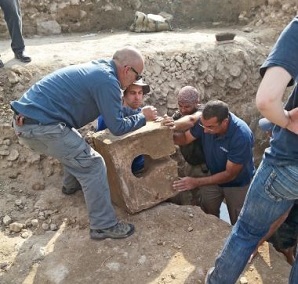 Toilet found in Lachish gate-shrine
Toilet found in Lachish gate-shrine
King Hezekiah came to the throne of Judah in the late 8th century B.C., during the years the Northern Kingdom of Israel was conquered by Assyria and its people taken captive. Even though Hezekiah was himself an Assyrian vassal, he began instituting religious reforms that resulted in the destruction of sites for idol worship and the centralization of Jewish worship in the Jerusalem Temple. His reforms would later lead to an attempt to break away from Assyria – an attempt that resulted in the invasion of Judah by King Sennacherib in 701 B.C. during which Lachish was conquered, its gate and gate-shrine destroyed and its people taken captive to Assyria.
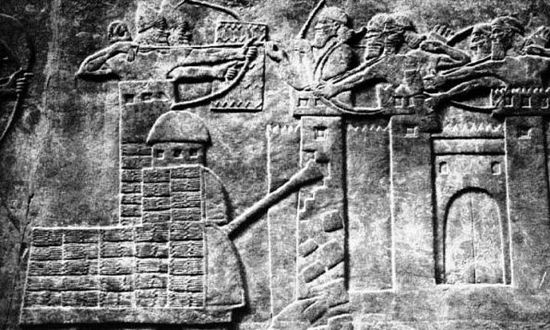 Bas-relief from Sennacherib’s palace showing assault on gate complex of Lachish in 701 B.C.
Bas-relief from Sennacherib’s palace showing assault on gate complex of Lachish in 701 B.C.
